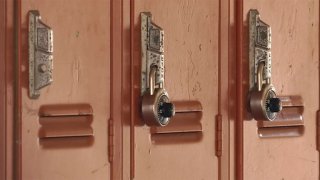
An educator with experience advising the Massachusetts Department of Elementary and Secondary Education (DESE) believes it’s time to sue the state agency if it doesn’t do more to reduce racial imbalances in public schools.
“They still have an opportunity before someone files a lawsuit,” said Dr. Raul Fernandez, the former chair of DESE’s Racial Imbalance Advisory Council (RAIC). “My great hope was that we would have leaders that would actually step up and meet this moment, and it just hasn't happened. So, it seems we're on the path that many other communities have found themselves – whether it be cities or states – on the path toward some kind of court involvement.”
In June, Dr. Fernandez and his colleagues on the advisory council released a report called “Racial Segregation in Massachusetts Schools.” It reveals that 63% of the Commonwealth’s public schools meet the council’s definition of segregated. That means more than 500,000 students are educated in school environments considered racially imbalanced and the RAIC says the law requires education leaders to do something about it – even if they didn’t create the imbalance.
Segregated school = at least 71% white or nonwhite
“I would love to see ed leaders, including the governor's education leader, step up and say: ‘this is a real problem. We see the impacts of it. We see who's most hurt by it,’” Fernandez said.
About 103,000 Black and Latino students attend schools defined as “intensely segregated nonwhite”. These students, according to the report, receive a stunningly poor education compared to their white counterparts.
Intensely segregated school = at least 90% white or nonwhite
Local
Intensely segregated white schools score a 66.3 out of 99 in performance assessments, while segregated nonwhite schools score 48 points lower, according to the report.
With this in mind, the RAIC included an expansion of the METCO program as one of its 18 recommendations to motivate state education leaders to address racial imbalances in schools. The METCO program buses 3,200 students from overwhelming nonwhite Boston neighborhoods to overwhelming white school districts in the surrounding suburbs.
If the Legislature is willing to partner and leverage revenue from the Millionaire’s Tax, METCO’s CEO says she can quickly scale up program enrollment 25% -- to 4,000 students. The estimated cost is $6.4 million per year.
“We could definitely reach more students every year,” said METCO’s CEO Milly Arbaje-Thomas. “We only place one-third of our applicants. There's always two-thirds of the applicants that do not get referred or placed because our program is based on seat availability.”
Millionaire’s Tax Revenue = $2.2 billion (year one)
Must be used to fund education or transportation
The Massachusetts law that governs racial balance in schools was enacted in 1965, around the same time METCO was created. Some of the law’s decades-old language about race was tossed aside by the RAIC – deemed out-of-date. One of the council’s top recommendations is to update the law.
The Acting Commissioner of Education and the Healey Administration’s Education Secretary Patrick Tutwiler declined NBC10’s interview requests. However, Tutwiler has previously stated his commitment to “high quality education in inclusive learning environments.”
States with similar racial imbalance laws in education:
Connecticut, Minnesota, New Jersey, Washington



